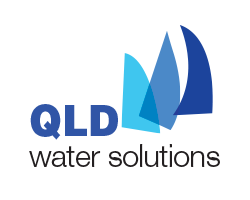- DOMESTIC & COMMERCIAL WATER TREATMENT & SEWAGE SOLUTIONS
- (07) 5679 0695
- WORKING HOURS : MON-SAT (8.00AM - 6.00PM)

- Water Purification System
- Sewage Treatment System
- Ultra Filtration Systems
A Look At Water Filter Technology

A Look At Water Filter Technology
Thanks to water filtration devices, we can enjoy water that’s clean and safe. You may not fully understand how these technologies work, though.
There are tons of different water filters available for domestic and commercial use today. Most of them use the same basic technology to work, though. Some filters rely on a single type of technology, while some of the other ones will use several pieces of technology together to create clean water.
You should know which technology is being used so that you can make an informed decision about what to buy and how it will affect you. Using the right technology is key to removing the contaminants in your drinking water.
We are going to help you make an informed decision by detailing some of the more common water filtration technologies.
Activated Carbon
By adsorption, activated carbon absorbs all the chemical impurities inside the water, removing them from the water and pulling them into itself.
When used as a filter, this can get rid of chlorine, dirt, a variety of organic compounds and other pollutants. It can even remove odours or flavours from the water that may be unpleasant. Activated carbon won’t be able to remove nitrates, minerals and sodium, however. There are two primary types of carbon filters available- granulated and carbon block.
Ceramic
Ceramic water purification systems are incredibly expensive and contain small holes that remove larger pollutants from the water. They get rid of cysts, bacteria, sediment and dirt, but they are unable to remove chemicals and unwanted flours and odours. Most modern ceramic filters come with activated carbon built into the purification system that helps them eliminate more contaminants.
Ultraviolet
Microorganisms cannot stand up to ultraviolet purification systems. They are destroyed by ultraviolet light, but no physical contaminants can be removed from the water with this purification system. That’s why the most modern ones come with ceramic filters to remove physical pollutants.


Reverse Osmosis
Through a process known as reverse osmosis, water is forced through a membrane and pollutants are left behind. The pure water comes through to the other side of the membrane while the contaminants are left behind. Reverse osmosis can remove impurities that other filters cannot, such as nitrates, fluoride and arsenic. Even heavy metals and asbestos can be removed from the water this way. Many modern reverse osmosis systems come fitted with carbon filters so that they can get rid of an even wider range of contaminants.
Reverse osmosis filter work very slowly, though, and they produce large amounts of waste water.
Ion Exchange
With an ion exchange, water is purified by getting rid of the unwanted ions, which can be generated by cadmium or lead, and replacing them with desirable ions, such as those from potassium and sodium. Most ion exchange water purification systems rely on either deionisation or softening.
Bad ions can be removed by using ion exchange filters, but they won’t get rid of microorganisms or bacteria very well. They do require recharging every now and then as well.
A variety of filtration methods can effectively eliminate every kind of contaminant from your water. If you know the pros and cons of using each of these methods, you will be able to determine which one will be right for you.
At QLD Water Solutions, we work to make sure that you have the right water filter for your domestic or commercial needs. You will find a wide range of water filtration solutions through us, and we will be happy to help you find the right system.
About Us
- 14 Concordia St, Boondall QLD 4034
- (07) 5679 0695
- qwaters@bigpond.com
Water Treatment
Water Purification
Water Treatment
Safe Drinking Water Units
Merus Water Conditioning System
Legionella Prevention Filters
Solar Reverse Osmosis Unit
Quick Links
Home
About Us
Services
Installers Welcome
Latest News
Contact

Copyright © 2019 QLD Water Solutions. All Rights Reserved.